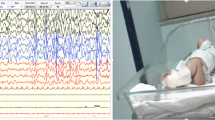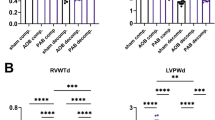Abstract
The association between renal hypoplasia and pulmonary hypoplasia in congenital diaphragmatic hernia (CDH) has become recently appreciated. However, the underlying mechanisms responsible for this association are still unknown. Renin–angiotensin system (RAS) plays an important role in renal and somatic growth, angiogenesis and reproduction. We hypothesized that abnormal expression of RAS components may be responsible for renal hypoplasia in CDH. We therefore designed this study to examine the gene expression of main components of RAS in the kidney of nitrofen-induced CDH in the rat. Pregnant rats were exposed to either olive oil or 100 mg of nitrofen on day 9.5 of gestation. Foetuses were recovered at term and divided into three groups: control (n=8), nitrofen without CDH (n=8) and CDH (n=8). Reverse transcription polymerase chain reaction was performed to evaluate the relative amount of angiotensinogen (AGT), angiotensin II type 1 receptor with 1a and 1b subtypes (AT1aR and AT1bR), angiotensin II type 2 receptor (AT2R), angiotensin-converting enzyme (ACE) and renin expression in the kidney. AT1aR, AT1bR, AT2R, AGT and renin levels were significantly decreased in the kidney of CDH rats compared with controls. We did not find a significant difference in ACE between CDH animals and controls. Our data show that the downregulation of RAS may play an important role in the pathogenesis of renal hypoplasia in the nitrofen-induced CDH.


Similar content being viewed by others
References
Gosche JR, Islam S, Boulanger SC (2005) Congentital diaphragmatic hernia: searching for answers. Am J Surg 190:324–332
Glick PL, Siebert JR, Benjamin DR (1990) Pathophysiology of congenital diaphragmatic hernia: I. Renal enlargement suggests feedback modulation by pulmonary derived renotropins. A unifying hypothesis to explain pulmonary hypoplasia, polyhydramnios and renal enlargement in the fetus/newborn with congenital diaphragmatic hernia. J Pediatr Surg 25:492–495
Hosoda Y, Rossman JE, Glick PL (1993) Pathophysiology of congenital diaphragmatic hernia IV: renal hyperplasia is associated with pulmonary hypoplasia. J Pediatr Surg 28:464–470
Tovar JA, Alfonso LF, Aldazabal P et al (1992) The kidney in the fetal rat model of the congenital diaphragmatic hernia induced by nitrofen. J Pediatr Surg 27:1356–1360
Montedonico S, Shinkai T, Puri P (2005) Kidney development in the nitrofen induced pulmonary hypoplasia and congenital diaphragmatic hernia in rats. J Pediatr Surg (in press)
Lai KN, Leung JCK, Lai KB et al (1998) Gene expression of the rennin–angiotensin system in human kidney. J Hypertens 16:91–102
Chertin B, Solari V, Reen DJ et al (2002) Up-regulation of angiotensin-converting enzyme (ACE) gene expression induces tubulointerstitial injury in reflux nephropathy. Pediatr Surg Int 18:635–639
Levy BI (2005) How to explain the differences between renin angiotensin system modulators. Am J Hypertens 18:134–141
Chertin B, Rolle U, Cascio S et al (2002) Upregulation of angiotensin II receptors in reflux nephropathy. J Pediatr Surg 37:251–255
Bagby SP, LeBard LS, Luo Z et al (2002) ANGII AT1 and AT2 receptors in developing kidney of normal microwine. Am J Physiol Renal Physiol 283:755–764
Ardaillou R (1999) Angiotensin II receptors. J Am Soc Nephrol 10:S30–S39
Yosypiv IV, El-Dahr SS (2005) Role of the rennin–angiotensin system in the development of the ureteric bud and renal collecting system. Pediatr Nephrol 20:1219–1229
Tufro-Mcreddie A, Romano LM, Harris JM et al (1995) Angiotensin II regulates nephrogenesis and renal vascular development. Am J Physiol 38:F110–F115
Zhang Z, Schäffer AA, Miller W et al (1998) Protein sequence similarity searches using patterns as seeds. Nucleic Acids Res 26:3986–3990
Rittler M, Mazzitelli N, Grandi C et al (2000) Renal enlargement in the fetus and newborn with congenital diaphragmatic hernia: a refuted hypothesis. J Pediatr Surg 35:442–445
Oliverio MI, Coffman TM (2000) Angiotensin II receptor physiology using gene targeting. New Physiol Sci 15:171–175
Nishimura H, Yerkes E, Hohenfellner K et al (1999) Role of the angiotensin II receptor gene in congenital anomalies of the kidney and urinary tract, CACUT, of mice and men. Mol Cell 3:1–10
Rigoli L, Chemenz R, di Bella C et al (2004) Angiotensin-converting enzyme and angiotensin type 2 receptor gene genotype distributions in Italian children with congenital uropathies. Pediatr Res 56:988–993
Oliverio MI, Kim HS, Ito M et al (1998) Reduced growth, abnormal kidney structure, and type 2 (AT2) angiotensin receptor-mediated blood pressure regulation in mice lacking both AT1AR and AT1B receptors for angiotensin II. Proc Natl Acad Sci USA 95:15496–15501
Tsuchida S, Matsusaka T, Chen X et al (1997) Murine double nullizygotes of the angiotensin Type 1A and 1B receptor gene duplicate severe abnormal phenotype of angiotensinogen nullizygotes. J Clin Invert 15:755–760
Author information
Authors and Affiliations
Corresponding author
Rights and permissions
About this article
Cite this article
Chertin, B., Nakazawa, N., Montedonico, S. et al. Altered renin–angiotensin system gene expression causes renal hypoplasia in the rats with nitrofen-induced diaphragmatic hernia. Ped Surgery Int 22, 57–60 (2006). https://doi.org/10.1007/s00383-005-1582-7
Published:
Issue Date:
DOI: https://doi.org/10.1007/s00383-005-1582-7




